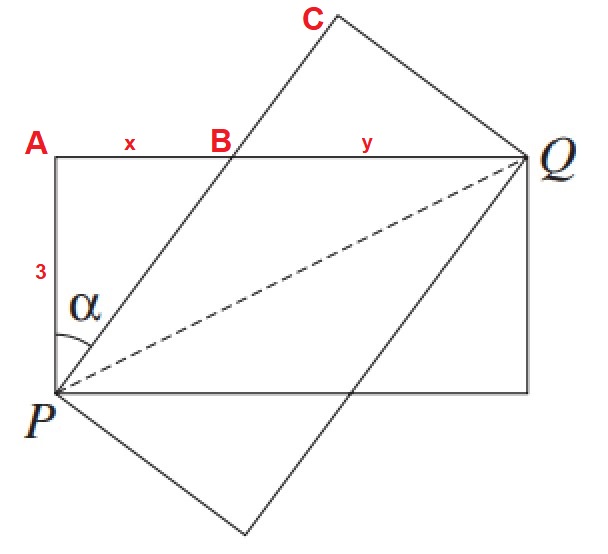Each rectangle is 6cm long and 3cm wide, they share a common diagonal of PQ. How do you show that #tanalpha = 3/4#?
2 Answers
I get
Explanation:
Fun. I can think of a few different ways to see this one. For the horizontal rectangle let's call the top left S and the bottom right R. Let's call the apex of the figure, a corner of the other rectangle, T.
We have congruent angles QPR and QPT.
The tangent double angle formula gives us
Now
Please see below.
Explanation:
.

Triangles
Therefore, the two triangles are congruent.
This means:
Let
We know that:
In triangle
Let's solve for
Let's plug this into


